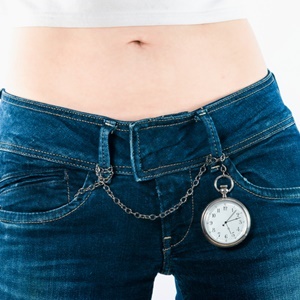
The most commonly used products to handle menstrual bleeding are tampons and sanitary pads (or towels), which should both be changed regularly throughout the day.
Some girls in South Africa don't even have access to tampons, which makes it understandable that for reasons of economy one would leave a tampon in for as long as possible. But just how safe is this? How long can you safely keep a tampon in?
The answer is, according to researchers, that tampons should be kept in for a maximum of eight hours (as long as a full night's rest).
Germs and bacteria
Ideally tampons should be changed at least every three to five hours, depending on the flow. It's also important to use the correct absorbency tampon for your flow.
“If the tampon becomes saturated quickly it should change how long it is kept in and how soon you change it,” according to Naazim Siddi Ganie, a doctor at Universitas Academic Hospital in Bloemfontein.
“There is not any use in keeping a saturated tampon in that doesn’t serve a purpose, so it is important to know how light or heavy your flow is,” says Dr Siddi Ganie.
Tampons have the advantage of allowing women to "hide" their menstrual period for example when swimming, or engaging in sporting activities that require tight-fitted clothing.
The disadvantage of tampons, however, is that they potentially allow germs and bacteria to flourish inside the vagina.
Health24 reports that if abnormal bacteria are retained in the vagina, menstrual blood collected inside the vagina within and around the tampon can act as a medium for the bacteria to grow, resulting in infection.
Pelvic inflammatory disease
Pelvic inflammatory disease (PID) is an umbrella term encompassing anything that causes infection in the pelvis. It is essentially an infection of the female reproductive organs.
It's a leading cause of infertility in women as bacteria move up from the vagina into the cervix, uterus, fallopian tubes, and to the ovaries, according to previous research.
Tampons differ from pads in that they are inserted into the vagina. This changes the internal environment by absorbing not only menstrual blood but natural vaginal fluid, disturbing the ecosystem of normal bacterial flora.
If you disrupt the vaginal flora inside the vagina, the otherwise “normal” organisms can become opportunistic and spread, explained Siddi Ganie.
“This will then lead to an infection of [the female] reproductive organs.”
Possible symptoms of PID include:
- Lower abdominal pain
- Vomiting
- High fever
- Foul-smelling vaginal discharge
- Irregular bleeding
Should you ever leave a tampon in overnight?
As mentioned above, tampons should not be kept in for longer than eight hours, which is (fortunately) equal to a full night's rest.
But if you are uncertain, or worried that you might sleep for longer than usual, or may forget to remove the tampon first thing in the morning, then opting for a sanitary pad or towel is not a bad idea.
Sanitary pads collect the menstrual blood outside the vagina, with less risk of disturbing the normal vaginal bacterial flora, and subsequent infection.
Read more:
Many women alter menstruation cycles




 Publications
Publications
 Partners
Partners











